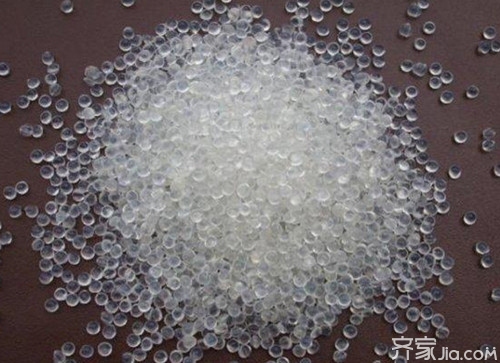Thermoplastic materials refer to plastics that have heat-softening, cooling-hardening properties. Most plastics used in our daily lives fall into this category. When heated, it softens and flows, and cooling hardens. This process is reversible and can be repeated. So, what are the thermoplastic materials ? What is the difference between thermoplastics and thermosets? Let's take a look with Xiaobian.

What are the thermoplastic materials
Polyethylene, Polypropylene, Polyvinyl chloride, Polystyrene, Polyoxymethylene, Polycarbonate, Polyamide, Acrylic plastics, Other Polyene Ingress and Copolymers, Polysulfone, Polyphenylene ether, Chlorinated Polyether, etc. It is a thermoplastic material. In the thermoplastic material, the molecular chains of the resin are linear or branched, and no chemical bonds are generated between the molecular chains. When the molecules are heated, they soften and flow. The process of cooling and hardening becomes a physical change.
Thermoplastic materials can be divided into three categories: general-purpose plastics, general-purpose engineering plastics, and high-performance engineering plastics.
The main thermoplastic materials are polyethylene (PE), polypropylene (PP), polystyrene (PS), polymethyl methacrylate (PMMA, commonly known as organic glass), polyvinyl chloride (PVC), nylon (Nylon), Polycarbonate (PC), Polyurethane (PU), Polytetrafluoroethylene (Teflon, PTFE), Polyethylene terephthalate (PET, PETE), etc.

The difference between thermoplastics and thermosets
First, thermoplastic material
When heated, it softens and flows, and cooling hardens. This process is reversible and can be repeated. Polyethylene, Polypropylene, Polyvinyl chloride, Polystyrene, Polyoxymethylene, Polycarbonate, Polyamide, Acrylic plastics, Other Polyene Ingress and Copolymers, Polysulfone, Polyphenylene ether, Chlorinated Polyether, etc. It is a thermoplastic material. In the thermoplastic material, the resin molecular chains are linear or branched, and no chemical bonds are generated between the molecular chains and soften and flow when heated. The process of cooling and hardening is a physical change.

Second, thermosetting materials
The first heating can soften the flow, heat to a certain temperature, produce a chemical reaction, and the crosslink solidifies and hardens. This change is irreversible. After that, when it is heated again, it can no longer become soft. It is with this characteristic that the molding process is performed, the plasticized flow at the first heating is used, the cavity is filled under pressure, and then cured into a product of a fixed shape and size. This material is called a thermosetting plastic.
The thermosetting plastic resin is linear or branched before curing, and forms a chemical bond between the molecular chains after curing, and becomes a three-dimensional network structure, which can not only be remelted but also cannot be dissolved in a solvent. Phenolic, aldehyde, melamine formaldehyde, epoxy, unsaturated polyester, silicone and other plastics are thermosetting plastics.
Mainly used for heat insulation, wear resistance, insulation, resistance to high voltage and other plastics used in harsh environments, most of which are thermosetting plastics, the most commonly used should be wok pan handle and high and low voltage electrical appliances.
What is the difference between the above thermoplastic materials and the difference between thermoplastic materials and thermosetting materials? This is a simple introduction here, and I hope to help you. For more information, please visit this website. Stay tuned.
Decoration Material Brand Decoration Material List Decoration Material Knowledge Hydroelectric Material Brand Waterproof Material
High Quality Cheap Price Outdoor Solar Powered Garden Lamp 100 LED Waterproof Motion Sensor Solar Wall Garden Lights
Outdoor Solar Powered Garden Lamp ,Cheaper Price Solar Wall Lights,Solar Wall Garden Lights,Motion Sensor Solar Garden Lights
Shenzhen You&My Electronic Technology Co., Ltd , https://www.youmyledlight.com